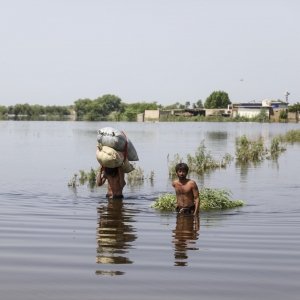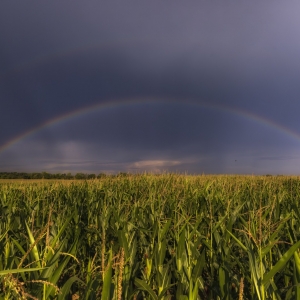This week’s episode of What’s Up With Water covers what to expect at COP27, new research on the link between water and the fossil fuel industry in Texas, and an update on Jackson, Mississippi’s failing water system.
Transcript
Welcome to “What’s Up With Water” – your need-to-know news of the world’s water from Circle of Blue. I’m Eileen Wray-McCann.
In less than two months, world leaders will convene in Egypt for the latest round of international climate talks. Diplomats are already outlining the agenda for COP27, which is expected to go beyond traditional deliberations about ways to limit heat-trapping greenhouse gas emissions. The United Nations representative for climate action in Egypt said that the upcoming talks will integrate the impacts from cross-cutting sectors like water, food, and energy. According to the news site Sada el Balad, UN representative Mahmoud Mohieldin said that the two-week meeting will focus on how communities can adapt to climate-driven floods, fires, and droughts that are already occurring. Debate will also center on how to pay for those adaptations. In 2009, wealthy countries promised to deliver $100 billion annually to poorer countries. But actual funding has fallen short of that goal. COP27 is scheduled to run from November 6th through the 18th in the resort town of Sharm El-Sheikh.
In the United States, new research reveals the inseparable bond between water and energy production in the fossil fuel industry. A state-sponsored study found that oil and gas extraction in the Permian basin of West Texas is expected to produce about 588 million gallons of wastewater each day for nearly four decades. That’s three times as much wastewater as the oil it provides. This wastewater, called produced water, is a hypersaline brine that emerges from wells alongside the oil and gas. The brine includes chemicals used during fracking as well as trace minerals and radioactive elements that are naturally present underground. Texas lawmakers commissioned the Produced Water Consortium last year to examine how produced water could be recycled into local water supplies. The research found that the industry creates an estimated 170 billion gallons of produced water each year. The leader of the research consortium said that the amount is so great that it would be logistically difficult, expensive, and environmentally dangerous to recycle it all. In addition, cleansing the water for reuse leaves a salty residue that would be difficult to dispose of in such large quantities.
In Jackson, Mississippi, the troubled O.B. Curtis Water Treatment Plant is operating once again, but city residents are still being advised to boil their water before drinking it. In late August, the treatment plant failed during heavy rains, leaving more than 150,000 people in the capital city without running water. Investigations into the crisis are now beginning. NBC News reports that staff from the U.S. Environmental Protection Agency’s Office of the Inspector General are on the ground in Jackson, conducting interviews. The office is an independent watchdog agency that oversees the EPA’s work. A spokesperson said the inquiry will be a thorough review of the causes of the crisis.
And that’s “What’s Up With Water” from Circle of Blue, where water speaks. More water news and analysis await you at circleofblue.org. This is Eileen Wray-McCann – thanks for being here.
Eileen Wray-McCann is a writer, director and narrator who co-founded Circle of Blue. During her 13 years at Interlochen Public Radio, a National Public Radio affiliate in Northern Michigan, Eileen produced and hosted regional and national programming. She’s won Telly Awards for her scriptwriting and documentary work, and her work with Circle of Blue follows many years of independent multimedia journalistic projects and a life-long love of the Great Lakes. She holds a BA and MA radio and television from the University of Detroit. Eileen is currently moonlighting as an audio archivist and enjoys traveling through time via sound.






